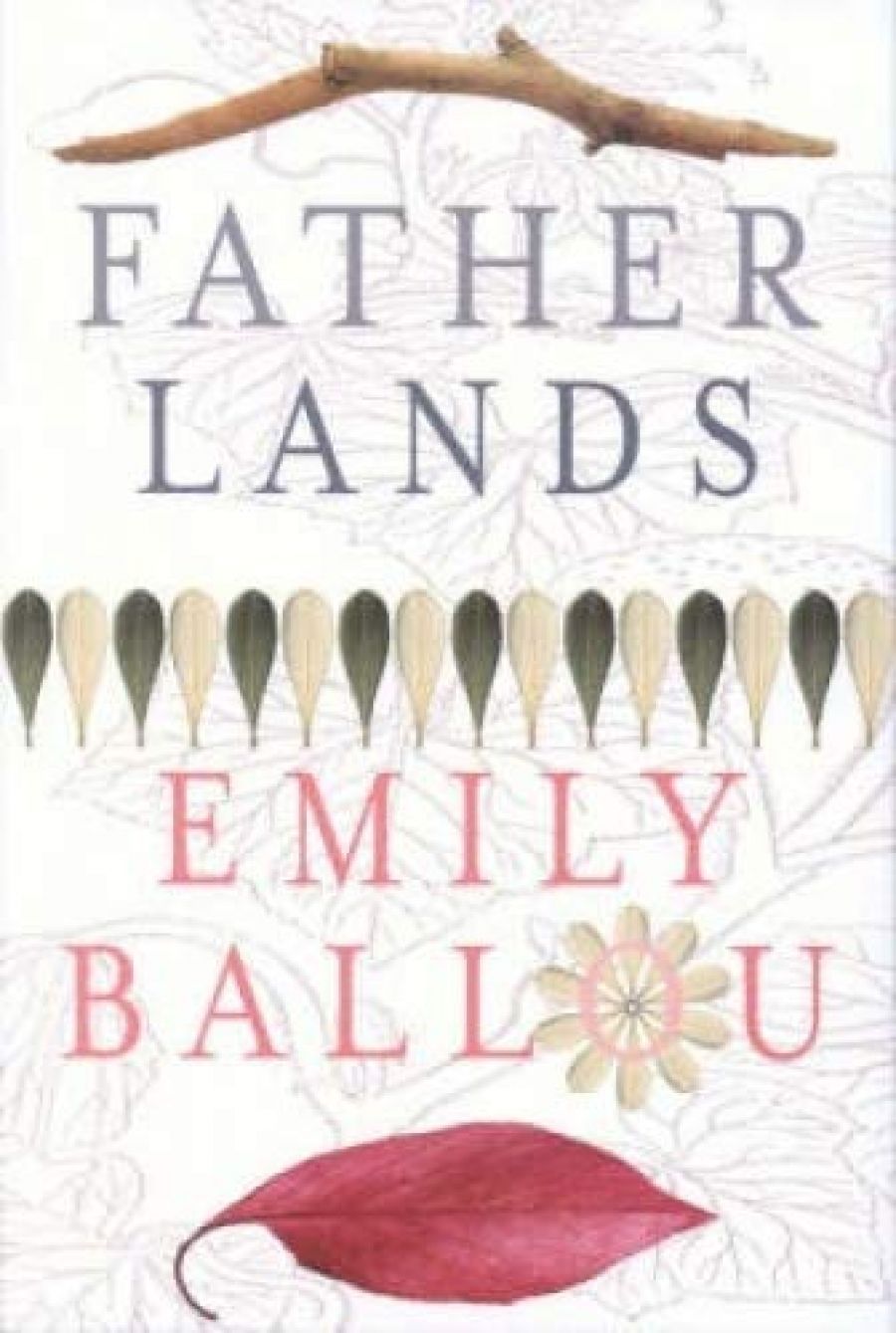
- Free Article: No
- Contents Category: Fiction
- Review Article: Yes
- Article Title: Silent snarls in the suburbs
- Online Only: No
- Custom Highlight Text:
My first thought on reading Father Lands was of Lasse Hallström’s film My Life as a Dog (1985) in the way that both novel and film enter so completely and unerringly into the world of childhood with all its quirks, illogicality, and fears. But there are other traditions at work in this novel, set in Milwaukee in the mid-1970s, and which recounts Cherry Laurel’s experience of the ‘Historical Experiment’ of integrating black and white primary school students. Ballou, an American who has made Australia her home for the last decade, may also have had in mind the use of a child’s-eye perspective that runs through American literature from Huckleberry Finn and To Kill a Mockingbird to Donna Tartt’s The Little Friend, in which matters of great historical significance, particularly the racial history of the USA, are brought into relief by the stark honesty of an ingenuous child-narrator.
- Book 1 Title: Father Lands
- Book 1 Biblio: Picador, $30 pb, 349 pp
Cherry Laurel does not tell this story in the first person, but Father Lands unfolds mostly from her point of view. At the beginning of the novel, eight-year-old Cherry is a kooky but happy child, the kind who makes secret words out of the ‘Alphabet of Trees’ she has devised from dead leaves and who believes she was a boy in a previous life but was given the ‘Soup of Forgetfulness’ before birth. But, as the Historical Experiment commences, life becomes more perilous. Her parents split up; the black kids and the white kids, bussed into the former’s school in a rundown neighbourhood, do not get on as well as the teachers might have hoped. Cherry watches Roots each night as homework and feels sick to her stomach. But her growing friendship with Hugo, one of the black kids, also fatherless and smart, is the one great compensation for all of this disruption.
The narrative of Father Lands unfolds gently. Even crises such as the burning to death of the little boy next door are observed curiously by Cherry and her sisters. Ballou’s feeling for the logic of childhood is impressive, her understanding that missing the bus home or appearing at school with a new haircut can be more significant than divorce or death, that there is a certain detachment in the newness of everything at this age. So, too, is her recall of the minutiae of the school yard: its sayings, language, and obsessions. There is a sense here of childhood as its own world. And what could be stranger than an American childhood, in which depressed mothers curl up in bed with a batch of chocolate butter frosting and eat the lot, where children dressed for Halloween totter around with real pumpkins on their heads? (One cannot help thinking of Harper Lee’s Scout in her ham suit here, and envying the Americans their national ceremonies, which, as Richard Ford’s Independence Day showed, can be so reliably invoked to invest domestic narratives with a metaphorical clout.)
If childhood is another world, so too are the suburbs, which are also beautifully evoked, such as the new development
where all the houses looked the same with perspex holes in the fences for the dogs to see through. Dogs barked like mad behind these round windows, but the perspex was so thick it drowned out the sound. If you walked down the street you would pass only the ferocious, silent snarls of insane, overchained dogs pressed to their portholes. It was like a violent film with the sound turned off.
From Cherry’s own porthole, the novel expands to take in other lives: the babysitter’s boyfriend who repossesses climbing frames from backyards; the gradual blossoming of Hugo’s shy mother, Macy; the loneliness of Cherry’s mother, Bell, deserted by her feckless child-husband; Cherry’s younger sisters, Holly and Ivy. It is here, in the sisters’ names, and the family obsession with trees, that the novel strays into a cuteness that sometimes palls. This is particularly the case with the girls’ earnest thoughts about race: ‘Ivy didn’t get why black kids had white bread and she had brown bread, except she thought it must be part of Integration.’
In the end, fathers, rather than race, are at the heart of Father Lands. The Father Lands, another almost-too-cute idea, are Cherry’s invention, a mythic land where absent fathers disappear. Beautifully written fragments of a failed father’s thoughts run sporadically between the chapters and give the novel an extra complexity and texture. Yet it is the mothers whose vulnerability and strength give the novel its true North.
What is particularly impressive about this as a first novel is the fullness of its narrative, the sympathy with which it enters into all of its characters’ lives, the completeness of their world. In the end, it refuses to be ‘for’ or ‘against’ the schools’ integration programme, settling instead for minor plot resolutions, while leaving some of the major plotlines unresolved.
Ballou is a talented writer. As I read, I kept thinking what a gentle, atmospheric film this novel would make. While it too often flirts with cuteness, its power lies in its sense of time and place, and its lovingly paced evocation of life in the suburbs through a child’s eyes.


Comments powered by CComment